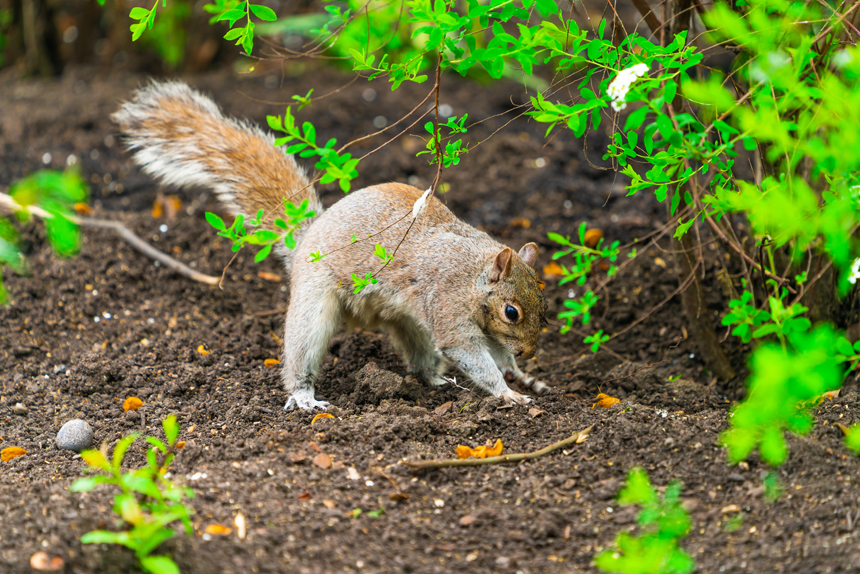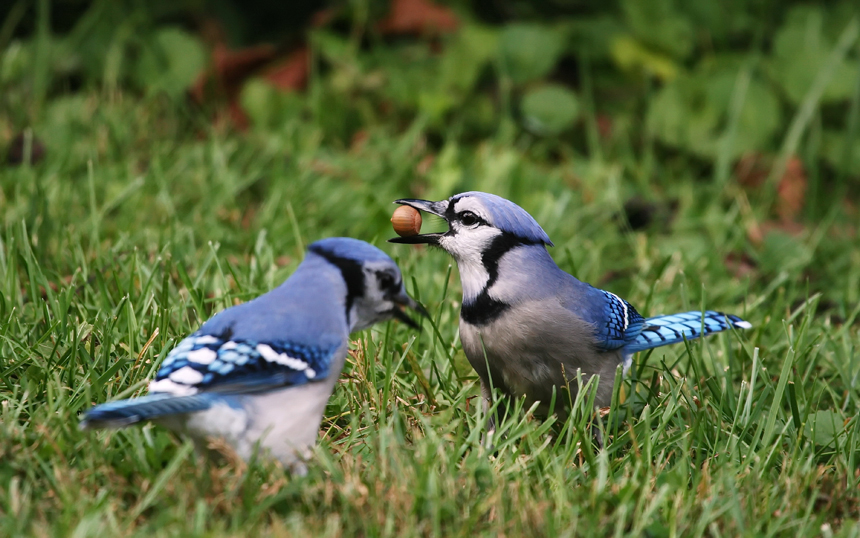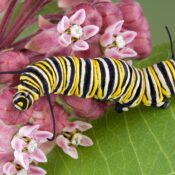The decline in children’s mental health during COVID-19 restrictions is a poignant reminder that we’re a social species, hardwired for contact with others. The saying “It takes a village to raise a child” is spot-on. Whether a literal village or a caring community within a city, we all – children especially – need regular interaction with peers and supportive mentors.
In a different sense, it takes a village to raise a forest, too. In this case, the “village people” include mice, birds, and squirrels. When we think of forests, we naturally picture trees – probably large, mature ones. But even big, old trees rely on some pretty humble villagers. Forests are complex, elegant systems that could not exist without a little help from their friends.
According to the U.S. Department of Agriculture, oaks and hickories play a keystone role in hardwood forests throughout the eastern United States. But nuts and acorns aren’t so good at wafting on the breeze to disperse. They need a hand, or more likely, a paw or beak, to spread far from the trees that produced them. Everyone fares better outside the shadow of their parents.
It’s no surprise that gray squirrels, including their black melanistic subgroup, are critical to the survival of nut-bearing trees. As humorist Will Cuppy wrote in his 1949 book How to Attract a Wombat, “Squirrels have been criticized for hiding nuts in various places for future use and then forgetting the places. Well, squirrels do not bother with minor details like that. They have other things on their mind, such as hiding more nuts where they can’t find them.”
Before learning about squirrels, I also assumed they forgot most of their buried nuts. However, in controlled trials done at Princeton in 1990, it turns out gray squirrels recover about 90 percent of them after 12 days.

But as more and more forest land is developed, the large wooded tracts that gray squirrels prefer become fragmented. A side-effect is that red squirrels, which are better suited to patchwork forests, are driving their gray cousins out of the woods. I assume this explains why gray squirrels have taken to chewing the faces off Halloween pumpkins instead of reforesting the landscape. But red squirrels, native to pine/fir/spruce habitats, cache most acorns and nuts above ground in “larders,” and plant very few hardwoods.
Mice also collect tree seeds and inter some for later use, thus helping to regenerate maples, American beech, pine, and other species.
Apparently, the impact of each mouse on forest health depends on its temperament. Pioneering studies at the University of Maine have documented a range of personality types among mice and their cousins the meadow voles and pine voles (not to be confused with moles, which are carnivores). In a nutshell – so to speak – timid mice and voles don’t travel far to bury seeds, and they tend to pick sites conducive to seed germination. Brash rodents go farther afield, but often hide their seeds in spots that are less tree-friendly. Each strategy aids the forest in different ways. (When I see a mouse indoors, I don’t wonder if it has a nice disposition – I just want it out.)

While acorns and nuts can’t float on the wind, they sure do fly. A November 12, 2022, story from the Canadian Broadcasting Corporation reports that drones will soon be planting trees in western Canada. But that’s cheating. Blue jays have been doing this for thousands of years. In his 2005 book, Oak: The Frame of Civilization, arborist and nature-writer William Bryant Logan says blue jays forget more of the acorns they stick in the ground than squirrels do. That’s what happens when you have a bird brain, I guess.

Without good regeneration, a forest is doomed. But there are other key elements to a robust and resilient forest, such as pest control. In a diverse and vibrant forest “village,” insects that harm trees are usually kept in check through an array of natural controls. Birds, predatory insects, viruses, and fungi are just some of the agents that help keep pest populations in balance.
Quite recently, it was shown that bats may be the most crucial pest-control player of all. Bat caves are for hibernating bats, and perhaps a crime-fighting superhero with a bat fetish. But during the summer, bats are happy campers in the woods, hanging out under loose tree bark in the daytime.
An October 30, 2022, article in the journal Ecology summarized the first-ever U.S. field study on the specific role bats play in forest health. Elizabeth Beilke and Joy O’Keefe conducted the 3-year study “in the central hardwood region of the United States,” as they cryptically say in the article. The 20 large mesh enclosures they made were opened at dawn and closed at dusk so bats could not enter. Each year from 2018 to 2020, insect damage to tree seedlings in the covered plots was compared with damage in 20 same-size control plots open to bats.

Their findings are clear: “Insect density was three times greater on seedlings in bat-excluded versus control plots. Additionally, seedling defoliation was five times greater with bats excluded…” Beilke and O’Keefe believe bats are imperative to North American forest ecosystems, possibly more than any other animal. It was bound to happen: every village has its big-shot.
I suggest that, whenever possible, we plant a few trees for our village, and give lots of kind words to our fellow villagers. We all have a part to play.
Become a Saturday Evening Post member and enjoy unlimited access. Subscribe now



